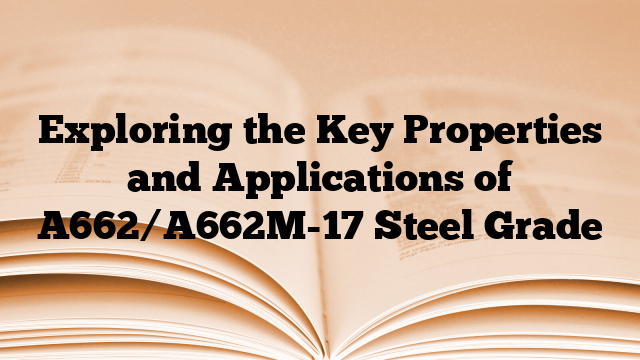ASTM A662/A662M-17 is a standard specification for pressure vessel plates, carbon-manganese-silicon steel, for moderate and lower temperature service. It covers three grades of carbon steel plates, designated as Grade A, Grade B, and Grade C, specifically intended for fusion-welded pressure vessels.
The chemical composition of A662/A662M-17 steel grade includes carbon (C), manganese (Mn), phosphorus (P), sulfur (S), and silicon (Si). The maximum allowable carbon content is 0.24% for all grades, while the maximum manganese content varies between 0.70% and 1.35% depending on the grade. The maximum phosphorus and sulfur contents are limited to 0.025%, and the maximum silicon content is 0.13-0.45% depending on the grade.
The mechanical properties of A662/A662M-17 steel grade include tensile strength, yield strength, and elongation. The minimum tensile strength for Grade A is 75-95 ksi (515-655 MPa), for Grade B is 80-100 ksi (550-690 MPa), and for Grade C is 85-110 ksi (585-760 MPa). The minimum yield strength for Grade A is 45 ksi (310 MPa), for Grade B is 50 ksi (345 MPa), and for Grade C is 55 ksi (380 MPa). The minimum elongation for all grades is 18%.
The A662/A662M-17 steel grade is primarily used for fusion-welded pressure vessels in moderate and lower temperature service. These pressure vessels are commonly used in industries such as chemical processing, oil and gas, power generation, and refining. The steel grade offers good weldability and formability, making it suitable for fabrication and construction of pressure vessels.
Overall, A662/A662M-17 steel grade is a reliable and versatile material for various pressure vessel applications. Its chemical composition and mechanical properties ensure good performance, while its standard specification provides guidelines for proper manufacturing and usage.

